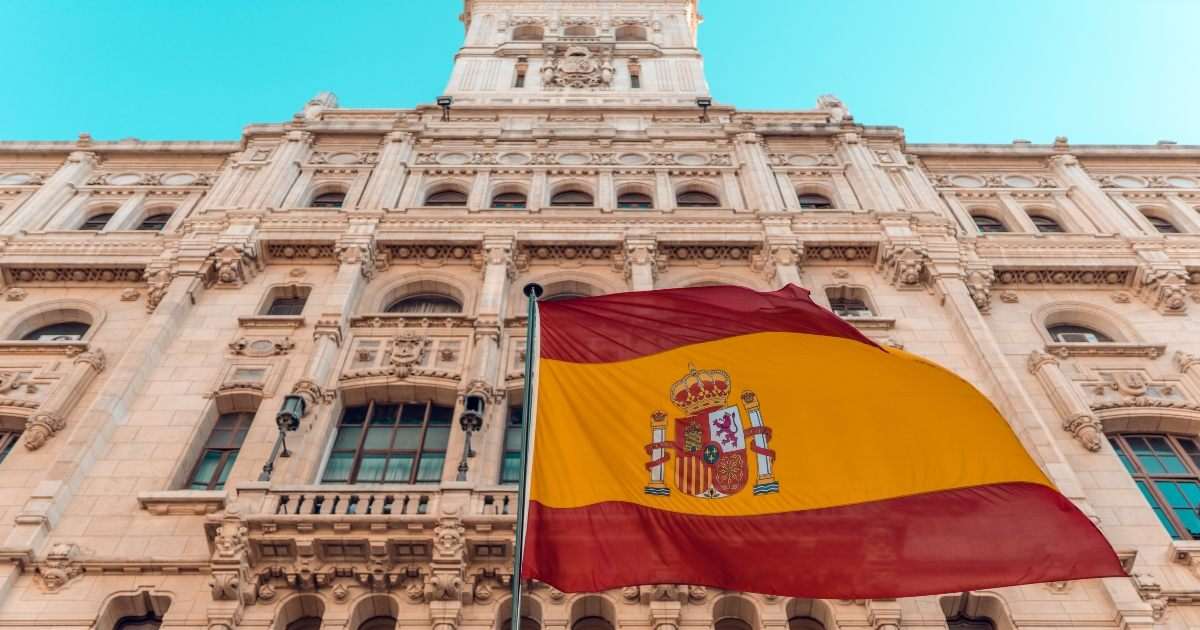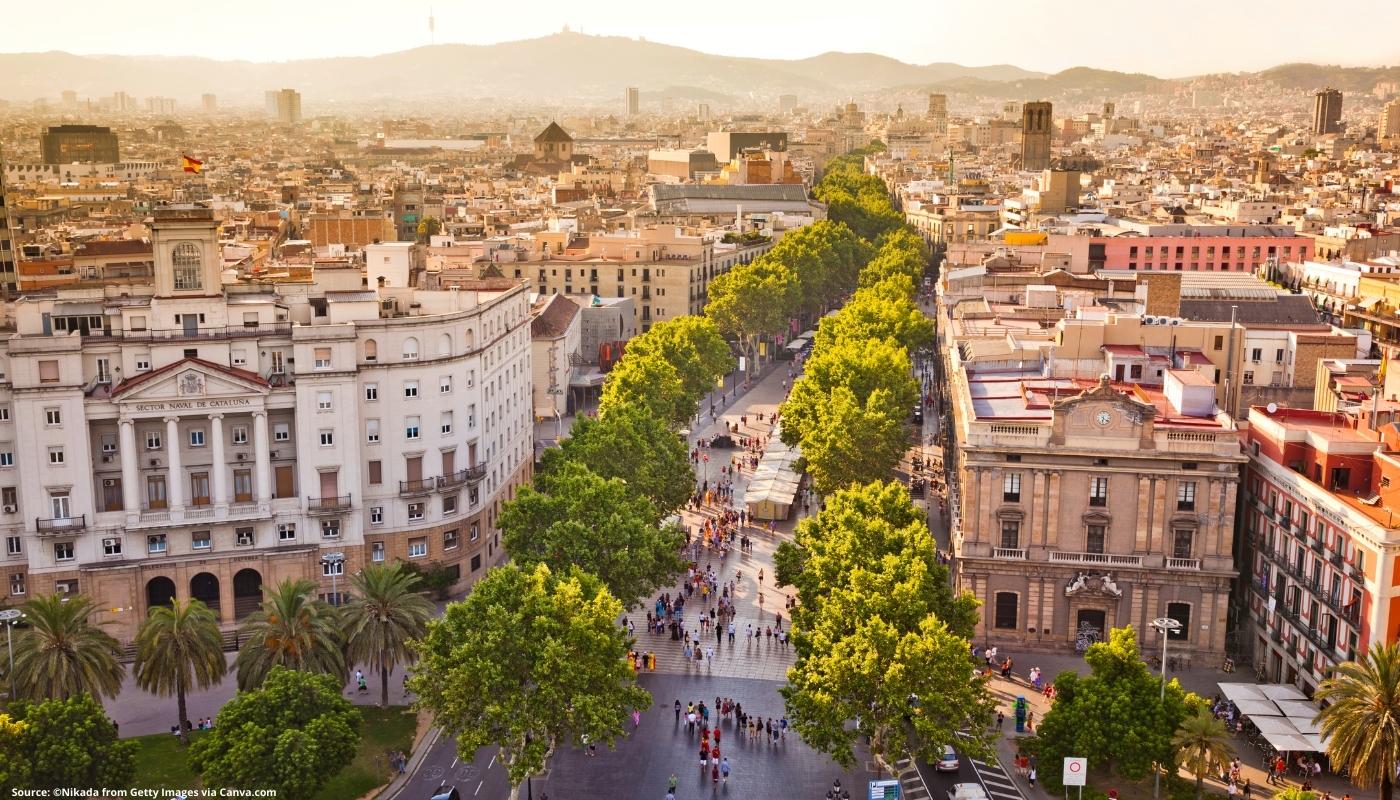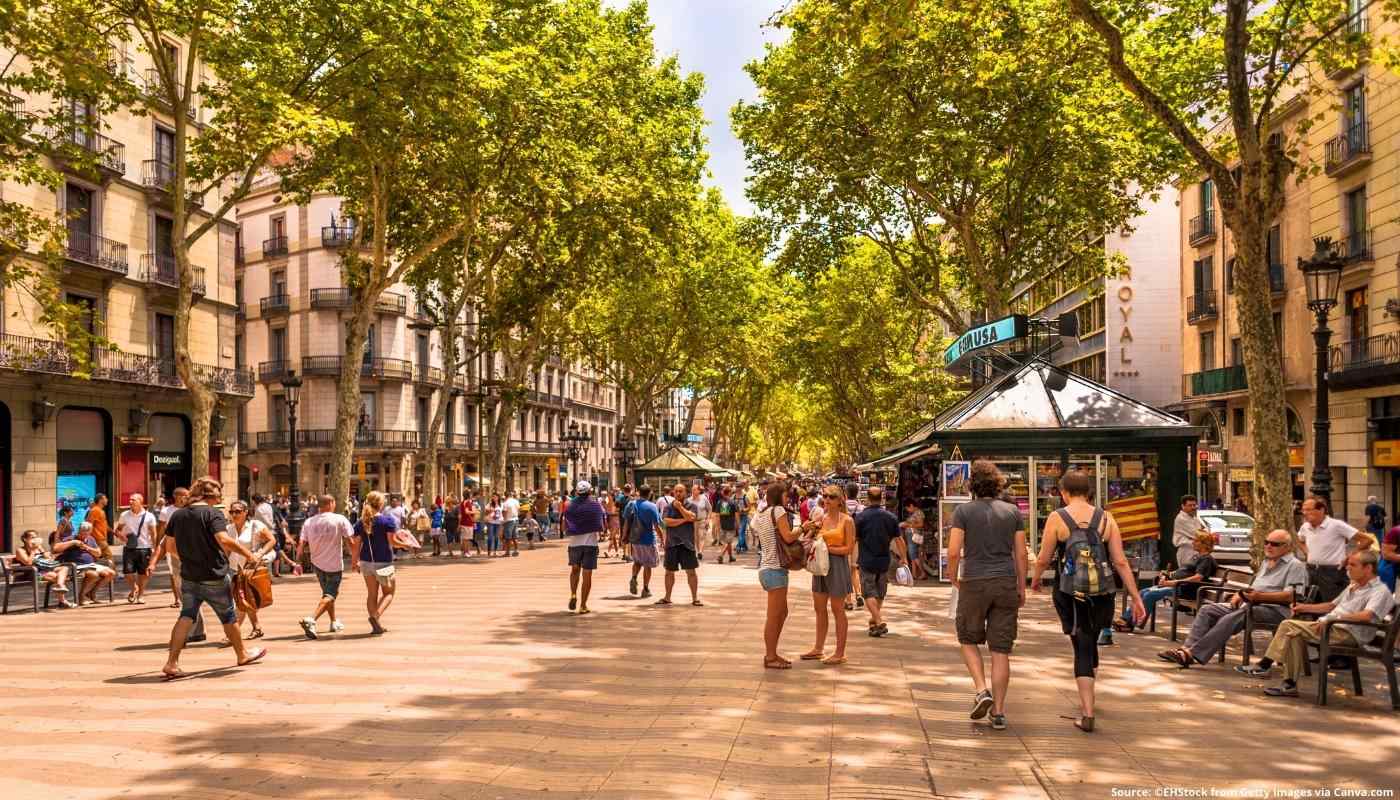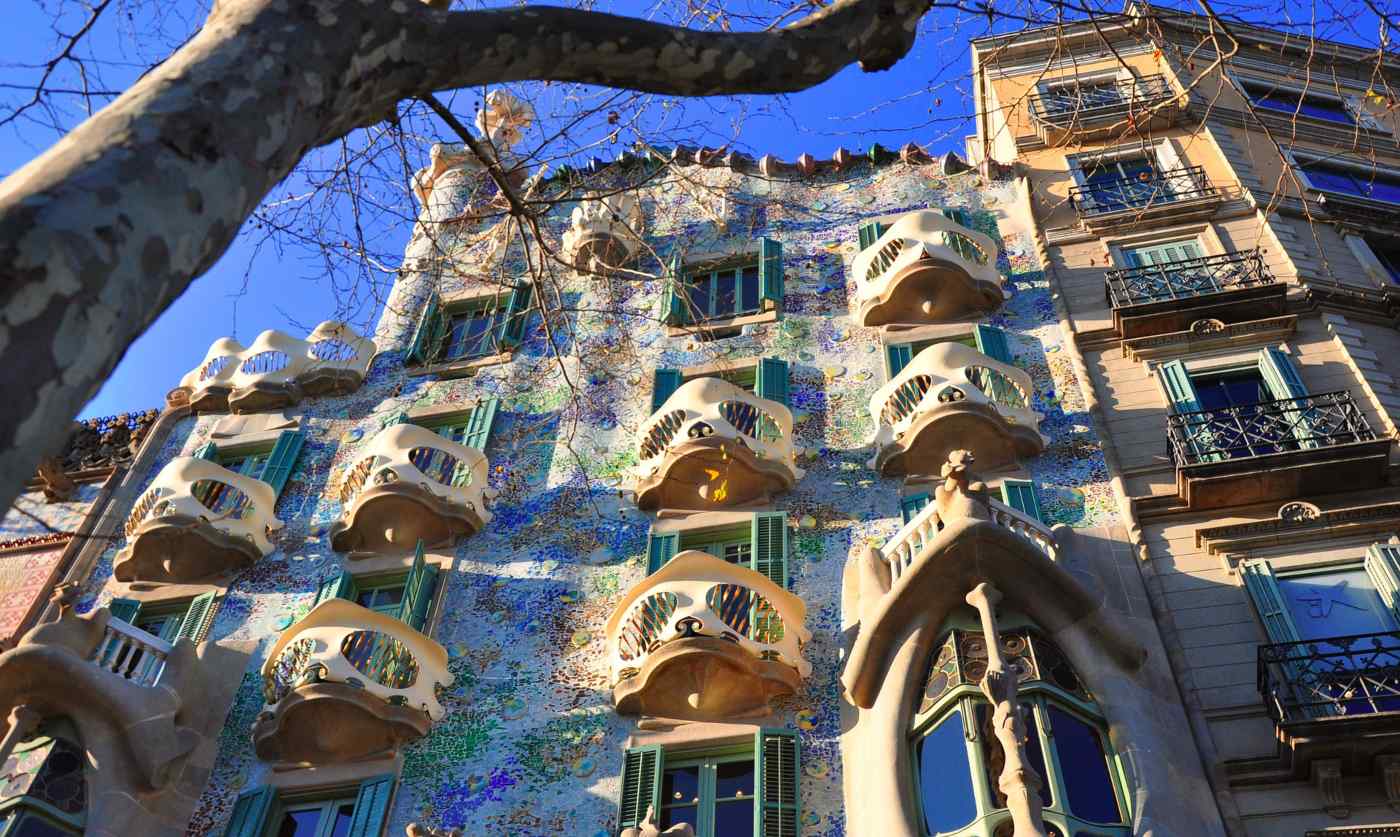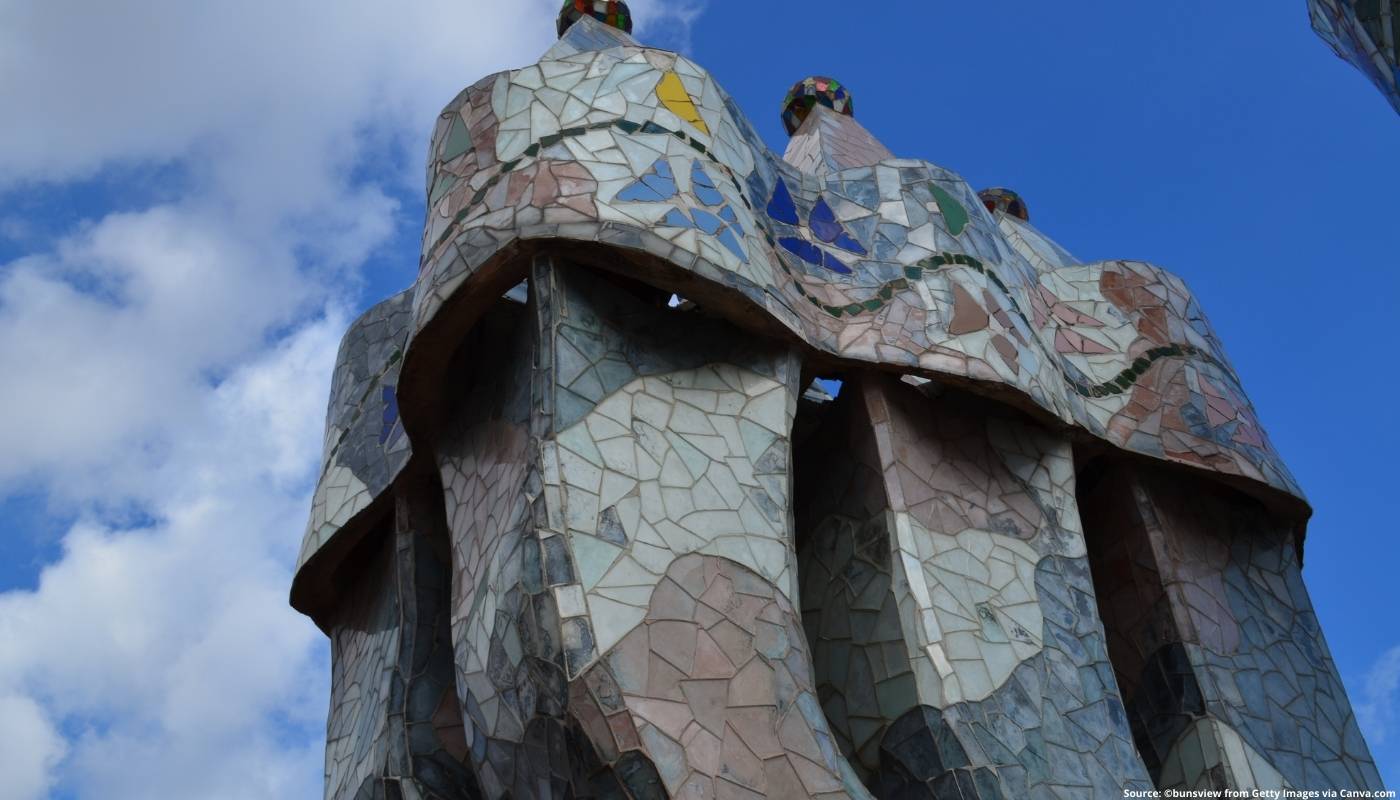When to visit Spain during the year?
Spain enjoys a Mediterranean climate characterized by hot, dry summers and mild winters, making it a year-round destination. The peak tourist season is in the summer (June to August), especially in coastal areas like Costa del Sol and Mallorca. Spring (March to May) is also popular, with pleasant temperatures ideal for exploring cities like Barcelona and Seville. Autumn (September to November) offers a quieter experience with harvest festivals, particularly in wine regions like La Rioja. Winter (December to February) attracts skiers to the Sierra Nevada and art enthusiasts to the museums in Madrid, as well as Christmas festivities in cities across the country.
How to get to Spain?
Spain is well-connected globally, offering numerous entry points for travelers. With several international airports and strong transportation options, reaching Spain is convenient, whether traveling by air, bus, train, or car.
- Main airports include Madrid-Barajas (MAD), Barcelona-El Prat (BCN), and Valencia Airport (VLC).
- Major international routes operate from each continent, including flights from New York to Madrid, London to Barcelona, Sydney to Madrid, and Tokyo to Madrid.
- Low-cost airlines such as Ryanair and EasyJet frequently service routes across Europe.
- Flight times vary but expect around 8 hours from New York, 2 hours from London, 24 hours from Sydney, and 14 hours from Tokyo.
- Main stations include Estación Sur in Madrid and Estación de Autobuses in Barcelona.
- Buses connect cities like Barcelona, Madrid, Valencia, and Sevilla.
- Spain’s high-speed trains (AVE) connect major cities like Madrid, Barcelona, and Sevilla, with international connections to France.
- Average durations include 3 hours from Madrid to Barcelona and 2 hours from Madrid to Valencia.
- Main highways include the AP-7 from France along the Mediterranean coast and the A-2 from Madrid to Barcelona.
- Distances from major cities include Barcelona to Madrid (620 km) and Paris to Barcelona (1030 km).
- Stay aware of tolls on highways, especially the AP routes, and note that road conditions are generally good.
Tourist activities in Spain
Spain offers a vibrant array of activities, suitable for all kinds of travelers. The country's diverse landscapes, from sandy beaches to mountainous regions, provide abundant opportunities for exploration.
Beaches: The Costa del Sol is famous for its stunning beaches, perfect for sunbathing and water sports. Consider visiting Marbella or Nerja for snorkeling and beach clubs.
History and Culture: Explore the rich history in cities like Toledo, known for its medieval architecture, and Granada, home to the stunning Alhambra. Barcelona boasts modernist masterpieces by Antoni Gaudí, including the Sagrada Familia.
Outdoor Activities: Adventure seekers can hike in the Picos de Europa or go skiing in the Sierra Nevada. For a more relaxed experience, enjoy biking through the vineyards in La Rioja.
Nightlife: Spain is famous for its nightlife, especially in cities like Madrid and Barcelona, where tapas bars and clubs come alive after dark.
Culinary Experiences: Participate in a cooking class to learn about Spanish cuisine, including paella and tapas, or take a wine tour through the Doñana region.
Accommodation in Spain
Accommodation options in Spain are diverse, catering to various budgets and preferences. Travelers can choose from luxury hotels to charming guesthouses. In metropolitan areas like Madrid and Barcelona, hotels range from $100 to $500 per night during peak seasons. Apartments and hostels offer budget-friendly alternatives, with prices starting as low as $30 per night. Coastal areas like Ibiza and Marbella also have villas and boutique hotels that can be pricier, especially in summer. For a unique experience, consider staying in a parador, a historic building converted into a hotel. The range of accommodations ensures that every traveler can find something that suits their needs and enhances their Spanish experience.
Food in Spain
Spanish cuisine is a delightful blend of flavors, ingredients, and regional specialties. Renowned for its tapas culture, visitors should not miss trying dishes like patatas bravas, jamón ibérico, and seafood paella. Popular drinks include sangria, while traditional Spanish wines and sherries are a must-try. Cities like Barcelona and Madrid boast vibrant food markets, such as La Boqueria and Mercado de San Miguel, where you can sample local delicacies. Average meal prices range from $10 for tapas in local bars to $40 for a fine dining experience. Dining in Spain is often a leisurely affair, so take your time to savor the culinary offerings.
Important numbers and information
- Emergency services: Police - 112, Ambulance - 061, Fire Brigade - 080
- Embassy contacts: U.S. Embassy in Spain - Calle Juan Bravo, 45, Madrid
- Main airports: Madrid-Barajas Airport - Avenida de la Hispanidad, Madrid
- Currency: Euro (EUR). Payment methods include cash, credit cards, and mobile payments.
- Visa/Passport regime: Schengen Area regulations apply for EU citizens; visa required for many non-EU travelers.
What to see in Spain?
Spain is rich in attractions, from historical landmarks to stunning natural sites. Major cities like Madrid and Barcelona are filled with iconic sights, while the countryside offers picturesque landscapes.
Madrid: The capital city is home to the magnificent Royal Palace and the renowned Prado Museum.
Barcelona: Famous for Gaudí’s Sagrada Familia and Park Güell, Barcelona is a must-visit for architecture lovers.
Seville: Known for its flamenco dancing and the beautiful Alcázar, Seville offers a taste of Andalusian culture.
Granada: The Alhambra, a UNESCO World Heritage site, is a testament to Spain's Moorish history and architecture.
Valencia: Home to the futuristic City of Arts and Sciences and stunning beaches, Valencia is a vibrant coastal city.
San Sebastián: Famed for its gastronomy and beautiful beaches, this Basque city is perfect for foodies.
History, geography and climate
Spain's rich history encompasses influences from the Romans, Moors, and Christians, shaping its diverse culture. The country’s landscape is equally varied, featuring mountain ranges like the Pyrenees, extensive plateaus, and beautiful coastlines along the Mediterranean Sea and Atlantic Ocean.
The climate varies across regions: Mediterranean along the coasts with hot summers and mild winters, while northern Spain experiences a cooler and wetter climate. Average temperatures range from 30°C (86°F) in summer to 10°C (50°F) in winter. This diversity enhances Spain's appeal throughout the year, catering to multiple interests and activities.
Population and culture
Spain has a population of around 47 million people, primarily speaking Spanish, along with regional languages like Catalan, Basque, and Galician. The culture is a vibrant blend of traditions, religions, and influences, showcasing a rich tapestry through festivals such as La Tomatina and Semana Santa. Major religions include Catholicism, Islam, and Judaism, reflecting the country's complex history.
Spanish culture celebrates art, music, and dance, with flamenco originating from Andalusia. Locals place great importance on family and community, making cultural interactions warm and inviting. Unique culinary traditions and regional customs add to Spain's cultural richness, making it a fascinating destination.


